|
|
|
|
|
Galleria Tassonomica
di
Natura Mediterraneo
|
 Nota! La determinazione degli insetti necessita quasi sempre di un'indicazione geografica e temporale precisa. Nota! La determinazione degli insetti necessita quasi sempre di un'indicazione geografica e temporale precisa.
Invitiamo quindi gli utenti ad inserire questi dati ogni volta che viene richiesta una determinazione o viene postata una foto di un insetto. I dati forniti dagli utenti ci consentiranno anche di attribuire un valore scientifico alle segnalazioni, contribuendo a migliorare e integrare le attuali conoscenze sulla distribuzione delle specie postate.
|
|
| Autore |
 Discussione Discussione  |
|
Lucio87
Utente Junior
 

Città: Caulonia
Prov.: Reggio Calabria
Regione: Calabria

64 Messaggi
Tutti i Forum |
|
|
Lucio87
Utente Junior
 

Città: Caulonia
Prov.: Reggio Calabria
Regione: Calabria

64 Messaggi
Tutti i Forum |
 Inserito il - 19 novembre 2008 : 21:01:24 Inserito il - 19 novembre 2008 : 21:01:24


|
questo si fa vedere solo in tardo autunno e in inverno
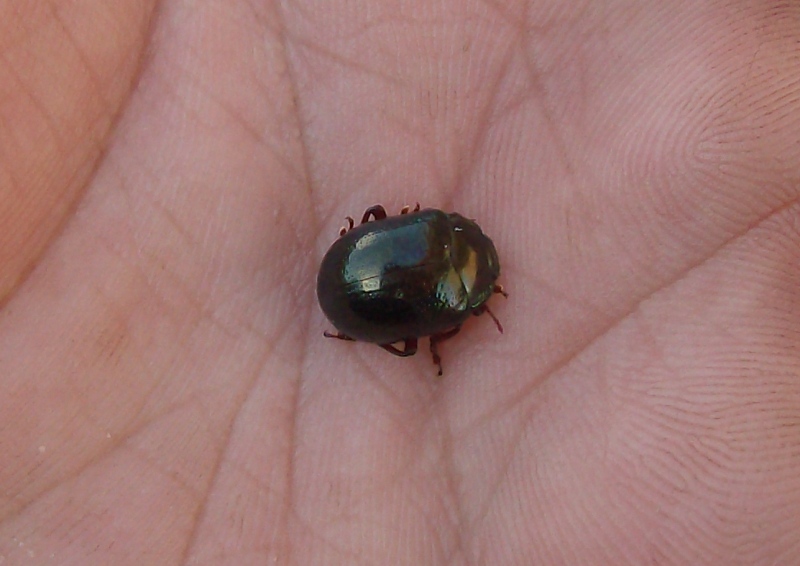
144,92 KB |
Modificato da - Chalybion in data 10 giugno 2020 20:59:35 |
 |
|
|
Lucio87
Utente Junior
 

Città: Caulonia
Prov.: Reggio Calabria
Regione: Calabria

64 Messaggi
Tutti i Forum |
 Inserito il - 19 novembre 2008 : 21:03:57 Inserito il - 19 novembre 2008 : 21:03:57


Classe: Hexapoda Ordine: Coleoptera Famiglia: Brachyceridae Genere: Brachycerus Specie:Brachycerus junix
|
Caulonia marina (RC)
08/11/08
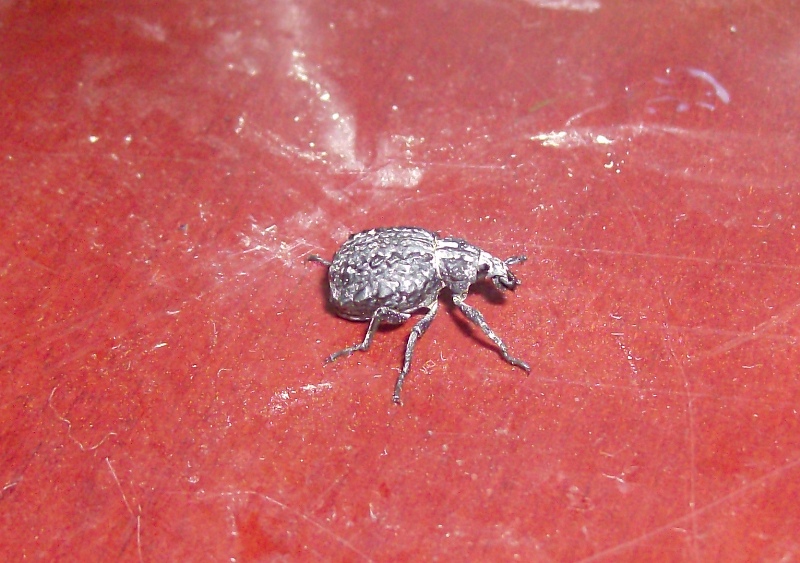
214,74 KB
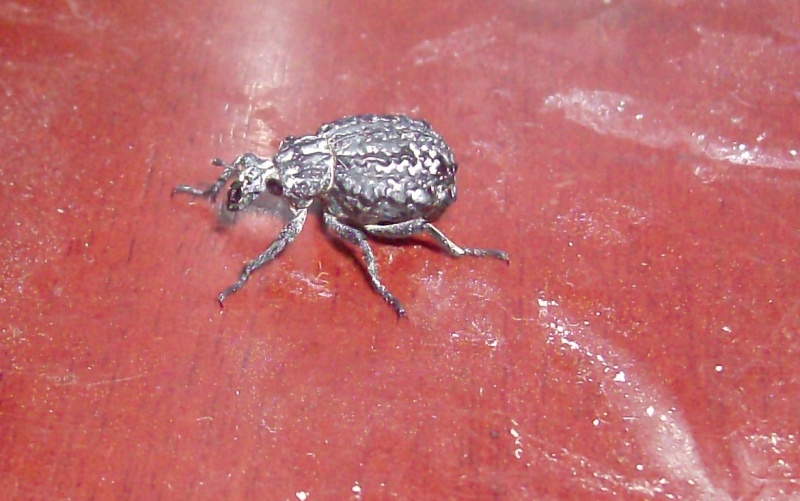
148,39 KB |
Modificato da - gomphus in data 09 aprile 2012 16:25:35 |
 |
|
|
Lucio87
Utente Junior
 

Città: Caulonia
Prov.: Reggio Calabria
Regione: Calabria

64 Messaggi
Tutti i Forum |
 Inserito il - 19 novembre 2008 : 21:07:44 Inserito il - 19 novembre 2008 : 21:07:44


|
questo l'ho trovato con mia grande sorpresa, dove mi sarei aspettato di vedere Geotrupidi, scarabeidi e altri buon gustai.....
Caulonia marina (RC) 16/11/08
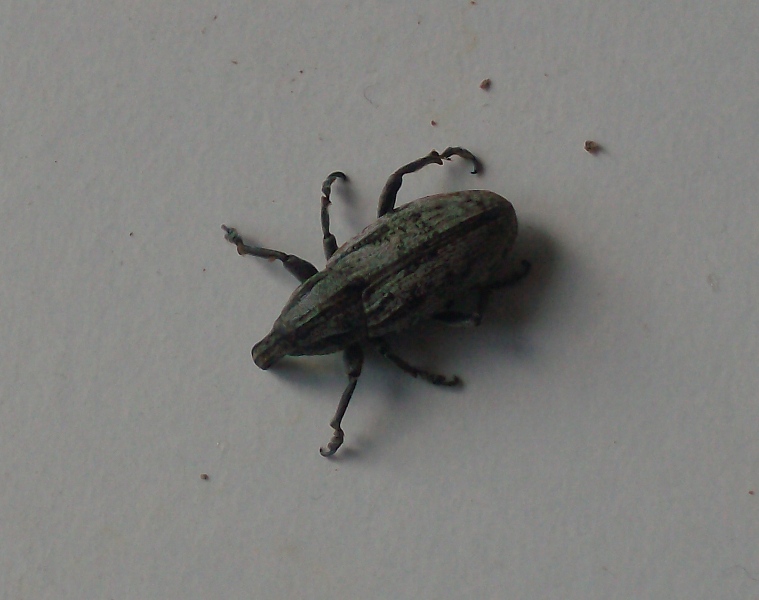
140,28 KB
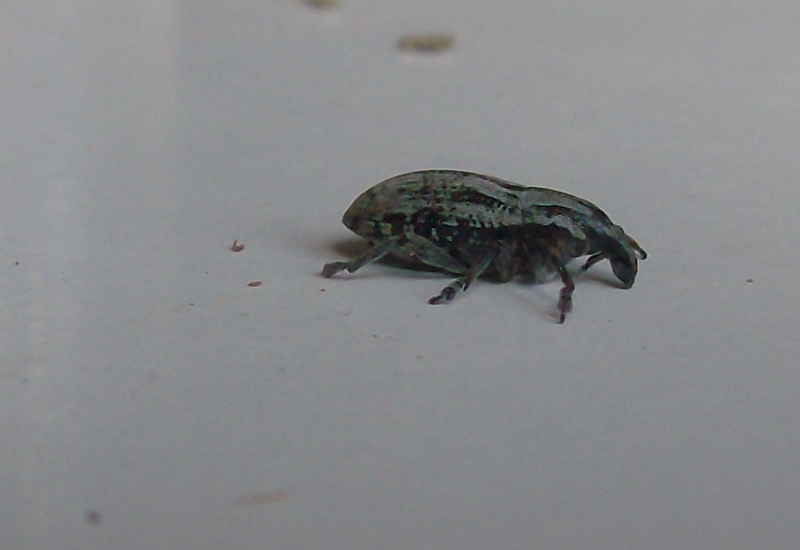
113,4 KB |
Modificato da - Chalybion in data 10 giugno 2020 21:00:04 |
 |
|
|
Lucio87
Utente Junior
 

Città: Caulonia
Prov.: Reggio Calabria
Regione: Calabria

64 Messaggi
Tutti i Forum |
 Inserito il - 19 novembre 2008 : 21:09:59 Inserito il - 19 novembre 2008 : 21:09:59


|
questo stava invece ben nascosto sotto una corteccia di pino, in montagna
Villaggio Ziia (RC)
28/10/08
Immagine:
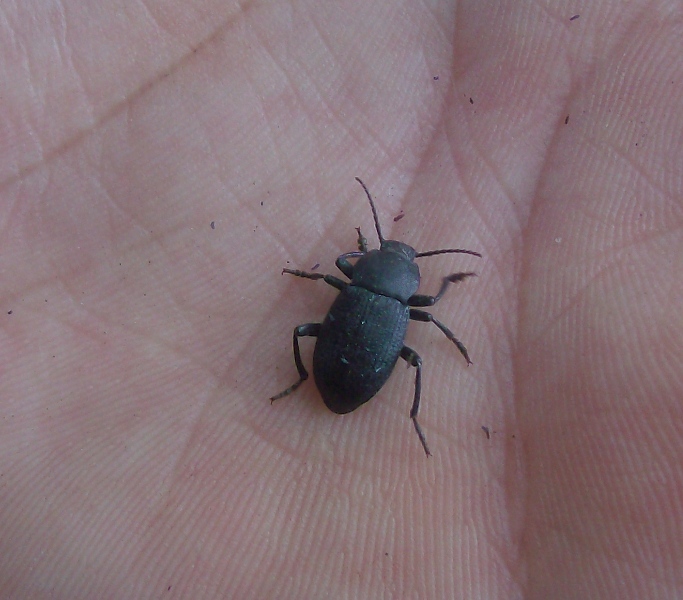
156,12 KB |
 |
|
|
Lucio87
Utente Junior
 

Città: Caulonia
Prov.: Reggio Calabria
Regione: Calabria

64 Messaggi
Tutti i Forum |
 Inserito il - 19 novembre 2008 : 21:13:03 Inserito il - 19 novembre 2008 : 21:13:03


Classe: Hexapoda Ordine: Coleoptera Famiglia: Tenebrionidae Genere: Accanthopus Specie:Accanthopus velikensis
|
Anche questi in montagna, sotto la corteccia di un faggio morto da qualche anno
Mangiatorella (RC)
28/10/08

216,62 KB
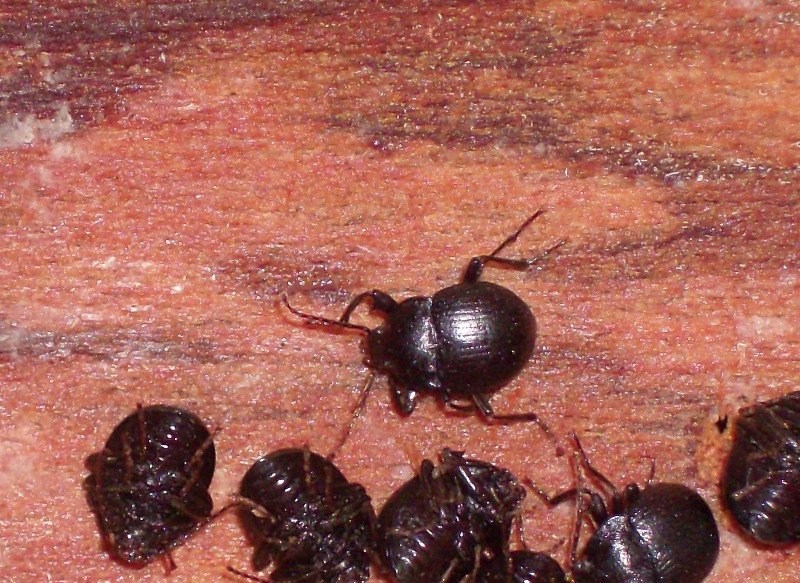
209,22 KB |
Modificato da - Vitalfranz in data 14 febbraio 2009 12:03:07 |
 |
|
|
Klaas Reißmann
Utente Senior
   
Città: Kamp-Lintfort, Nordreno-Vestfalia
Regione: Germany

1614 Messaggi
Tutti i Forum |
 Inserito il - 19 novembre 2008 : 21:53:09 Inserito il - 19 novembre 2008 : 21:53:09


|
Buonasera,
the first one is of the family Chrysomelidae, genus Lilioceris. And this one is Lilioceris lilii. In German we call it "Lilienhähnchen" (gallo giglio), because it feeds on Lilium and when you touch it, it makes a noise.
The second is of the family Chrysomelidae, too, but this is mediterranean, and I'm quite bad in the southern beetles, so I can't tell which species.
The third is of the family Curculionidae. I can't tell more.
The forth is of the family Curculionidae, too, genus Lixus. That's all I can tell for this.
The fifth is of the family Tenebrionidae, genus Dendarus and I think it is Dendarus tristis, but I'm not sure.
And the last is family Tenebrionidae, too, genus Enoplopus and I think this is Enoplopus velikensis, but there is a few species around Southeurope, so I'm not sure in this, too.
Ciao
Klaas |
 |
|
|
Velvet ant
Moderatore
   

Città: Capaci
Prov.: Palermo
Regione: Sicilia

3768 Messaggi
Flora e Fauna |
 Inserito il - 19 novembre 2008 : 22:03:18 Inserito il - 19 novembre 2008 : 22:03:18


|
Il Chrysomelidae della terza foto è Chrysolina bankii.
I tenebrionidi delle ultime due immagini sono Enoplopus dentipes.
Marcello


|
Modificato da - vladim in data 05 giugno 2016 05:50:33 |
 |
|
|
StagBeetle
Moderatore
    

Città: Ancona
Prov.: Ancona
Regione: Marche

6321 Messaggi
Tutti i Forum |
 Inserito il - 19 novembre 2008 : 22:08:06 Inserito il - 19 novembre 2008 : 22:08:06


|
Il primo è Lilioceris lilli (Chrysomelidae).
Il secondo dovrebbe essere un Chrysolina (può essere C. peregrina?)
Per il terzo dico Brachycerus junix.
Il quarto mi sembra un Cleonis sp.
Il quinto mi sembra un Helops (anche se manca della metalizzatura! ) )
Il sesto è sicuramente Enoplopus dentipes.
Ciao
Ops sono arrivato tardi!  ! !
Giacomo |
Modificato da - StagBeetle in data 19 novembre 2008 22:09:23 |
 |
|
|
Lucio87
Utente Junior
 

Città: Caulonia
Prov.: Reggio Calabria
Regione: Calabria

64 Messaggi
Tutti i Forum |
 Inserito il - 20 novembre 2008 : 11:45:54 Inserito il - 20 novembre 2008 : 11:45:54


|
Grazie tante Giacomo e Marcello, Thank you Klaas
allora facendo il punto vediamo se ho ben capito
1-2: Lilioceris lilii (l'avevo azzeccata)
3:Chrysolina bankii (ke differenza c'è con la C.peregrina?)
4-5:Brachycerus junix
6-7:Cleonis?Lixus? sono un pò confuso
9:Dendarus tristis (confermo l'assenza di riflessi metallici, era opaco)
10-11:Enoplopus dentipes |
 |
|
|
Klaas Reißmann
Utente Senior
   
Città: Kamp-Lintfort, Nordreno-Vestfalia
Regione: Germany

1614 Messaggi
Tutti i Forum |
 Inserito il - 20 novembre 2008 : 14:21:05 Inserito il - 20 novembre 2008 : 14:21:05


|
Buon Pomeriggio
Enoplopus dentipes (ROSSI, 1790) and Enoplopus velikensis (PILLER & MITTERPACHER, 1783) is the same species. Which name is synonymous (sinonimo) to the other?
Ciao
Klaas |
 |
|
|
Vitalfranz
Utente Senior
   
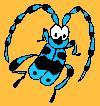
Città: Luxembourg
Regione: Luxembourg

2500 Messaggi
Flora e Fauna |
 Inserito il - 20 novembre 2008 : 14:23:55 Inserito il - 20 novembre 2008 : 14:23:55


|
Il n. 4 é uno Pseudocleonus cinereus, una specie poco comune, ma diffusa in tutta Italia.
Qui puoi vederne un esemplare dell'Alsazia.
Mi pare specie nuova per il Forum!

Si tratta di un Cleonino, che puoi facilmente distinguere dai Lixini (Lixus e dai Larinus) per il rostro grosso e carenato e per il pronoto dotato di rughe o carene.
Francesco Vitali
P.s. nel Forum era giá presente, con due foto, lo Pseudocleonus cinereus. |
 |
|
|
Vitalfranz
Utente Senior
   

Città: Luxembourg
Regione: Luxembourg

2500 Messaggi
Flora e Fauna |
 Inserito il - 20 novembre 2008 : 14:53:58 Inserito il - 20 novembre 2008 : 14:53:58


|
| Messaggio originario di Klaas Reißmann:
Enoplopus dentipes (ROSSI, 1790) and Enoplopus velikensis (PILLER & MITTERPACHER, 1783) is the same species. Which name is synonymous (sinonimo) to the other?
|
Hi Klaas,
ob Enoplopus dentipes und velikenis wirklich dieselbe Art sind, ist die erste zweifellos Synonym der zweiten Art. In allen Italienischen entomologischen Büchern ist aber anders, weiß ich nicht ob wegen nationalistischen Gründen oder weil diese Synonymie nicht komplett akzeptiert worden ist (in Fauna Europaea ist E. velikensis nicht als ein Synonym betrachtet... aber das bedeutet nichts: alle wissen den Ernstes dieses Projektes...
In der Tat betrachtete Reitter velikensis als der gültige Name.
mfg,
Francesco Vitali
P.s. Ich finde dieses Topic über "herbstliche Käfer" sehr ungewöhlich.... hast du etwas nach Juni gefunden??? Ich nein, und warten wir gerade auf den Schnee... minus 6 morgen...  |
 |
|
|
Klaas Reißmann
Utente Senior
   
Città: Kamp-Lintfort, Nordreno-Vestfalia
Regione: Germany

1614 Messaggi
Tutti i Forum |
 Inserito il - 20 novembre 2008 : 16:39:02 Inserito il - 20 novembre 2008 : 16:39:02


|
Hallo Francesco,
erstmal recht herzlichen Dank für die Information. Demnach wäre also Enoplopus dentipes synonym zu Enoplopus velikensis zu stellen. Das beruhigt mich ein wenig, auch dahin gehend, dass der Italiener irgendwie genau so ist, wie auch alle übrigen europäischen Entomologen: man läßt sich nur ungerne allen möglichen Kram aufzwingen. Immerhin kennt die ganze Welt die Gattung Nicrophorus, nur wir Deutsche sagen und schreiben weiterhin Necrophorus. Und ich habe keine Ahnung warm. Zumindest ich aus alter Gewohnheit.
Dein "P.S." habe ich nicht ganz verstanden. Was meinst Du mit "hast Du etwas nach Juni gefunden?" ?
Ansonsten kann ich diesen "Herbstthread" gut verstehen. In den vergangenen 10 Jahren mußte ich immer öfter feststellen, dass etliche Käfer im Herbst/Winter aktiv sind, einige sogar nur jetzt. So finde ich in dieser Jahreszeit in unseren Heidegebieten z.B. Amara infima und Bradycellus ruficollis, zwei ausgesprochene Winterarten, die man im Frühling und Sommer vergeblich suchen wird. Bei den Dromien, also Dromius, Calodromius, Paradromius etc. verhält es sich ähnlich, allerdings mit dem Unterschied, dass diese das ganze Jahr über aktiv sind und sich während der warmen Jahreszeit bevorzugt unerreichbar weit oben in den Bäumen aufhalten, während sie jetzt, im Herbst/Winter, alle am Stammfuß zu finden sind. Allen voran mein Paradetier Calodromius bifasciatus.
Viele Grüße
Klaas
P.S.: Wenn ich so gut Italienisch könnte, wie Du Deutsch, sähe die Welt ein ganzes Stück besser aus.
For the ones who don't speak german:
Hello Franscesco,
at first thank you very much for your informations. So Enoplopus dentipes is synonymous to Enoplopus velikensis. It is appeasing to see, that even the italian entomologists are the same as we all in Europe: you don't just believe in what you get told of scientists, you believe a bit in what is right in your mind. So on this hand the whole world knows the genus Nicrophorus, but only the germans still say Necrophorus, me too, and I don't know why. Maybe it is just practice.
I did not understand what your "P.S." means. What did you mean by saying "hast Du etwas nach Juni gefunden?" ?
But beside this I can understand this thread about autumninsects. In the last 10 years I had to learn more and more that many beetles are active in autumn/winter and some even only in the cold time of the year. So now I can find Amara infima and Bradycellus ruficollis, two species you will never find in the warm time of the year, because they are only active in winter. Surching for them in spring or summer makes no sense. With the Dromiinae (Dromius, Calodromius, Paradromius etc.) it is similar, but not really the same. These are active the whole year. But in the warm time of the year they are unreachable in the higher parts of the trees, whereas in winter you can find them on the bottom of the stems with no problems. Even my most loved one: Calodromius bifasciatus.
Ciao
Klaas
P.S.: If my Italian would be as good as your german the world would be much better for me. |
 |
|
|
Lucio87
Utente Junior
 

Città: Caulonia
Prov.: Reggio Calabria
Regione: Calabria

64 Messaggi
Tutti i Forum |
 Inserito il - 21 novembre 2008 : 00:19:22 Inserito il - 21 novembre 2008 : 00:19:22


|
Ciao Francesco, grazie tante!
sono molto felice di aver dato un contributo con una foto di una specie nuova per il forum.
grazie soprattutto per le utili informazioni, a proposito, mi piacerebbe informarmi maggiorente sui coleotteri, mi potete consigliare un libro che dia anche informazioni sull'identificazione.
per ora ho solo il volumetto sui coleotteri di interesse agrario del Tremblay, ma sono solo una parte delle famiglie , e veramene poche specie.
per quanto riguarda il discorso fatto tra te e Klaas , francamente non ci capisco molto , capisco solo un pò d'inglese ma volevo specificare che il nome dato alla discussione "Coleotteri autunnali" si riferisce più che altro al periodo delle foto, e solo per brachycerus e chrysolina avevo notato la loro presenza nella mia zona solo in periodi più freschi, ma può darsi sia stata una mia impressione. |
 |
|
|
Vitalfranz
Utente Senior
   

Città: Luxembourg
Regione: Luxembourg

2500 Messaggi
Flora e Fauna |
 Inserito il - 22 novembre 2008 : 13:37:35 Inserito il - 22 novembre 2008 : 13:37:35


|
Caro Lucio... erano solo considerazioni malinconiche di chi si appronta a passare il primo inverno in Nord Europa dopo averne passati 40 sulla Riviera Ligure... mai meno di 10°... tra l'altro si apre ora la stagione dei Vesperus ligusticus (un mio amico mi ha scritto che ha avvistato la prima coppia), una specie endemica della costa Ligure-Provenzale, a comparsa esclusivamente invernale.
Si, ma agli inverni della Riviera!
A Klaas dicevo solo che qui non ho avvistavo più nulla dall'inizio di giugno, qualche raro carabo (che non contavo), ma poi più niente...
Per quanto riguarda i libri, per la fauna italiana é molto utile il sito della Faune de France (più volte segnalato) da dove puoi scaricare interi libri in pdf.
C'è poi tutta la Fauna Germanica di Reitter, con le tabelle di tutti i coleotteri tedeschi, é però in tedesco e pure abbreviato...non é un testo facile, tuttavia le tantissime figure (Farbtafeln) ti potranno essere di grande aiuto per un orientamento.
Altri libri bisognerebbe acquistarli (o meglio fotocopiarli, visto che sono fuori commercio da mezzo secolo e più), in qualche museo, primo di tutti il Porta, oppure le guide in francese del Portervin.
Francesco Vitali
|
 |
|
|
danpic
Utente Senior
   

Città: Vigevano
Prov.: Pavia
Regione: Lombardia

2209 Messaggi
Tutti i Forum |
 Inserito il - 22 novembre 2008 : 13:57:07 Inserito il - 22 novembre 2008 : 13:57:07


|
 Ciao Lucio87....mi permetto di inserire qui sotto un collegamento ad una discussione che forse potrà essere utile, al suo interno vi sono altri collegamenti che potrai visionare. Ciao Lucio87....mi permetto di inserire qui sotto un collegamento ad una discussione che forse potrà essere utile, al suo interno vi sono altri collegamenti che potrai visionare.
Link
se hai dubbi o domande su qualcuno dei testi indicati chiedi pure.
Ne approfitto per salutare il buon Francesco....stretto nella morsa del gelo del Nord.....fai delle capatine quotidiane nel Forum ti saranno d'aiuto.
Un caro saluto a tutti.
   Danilo Danilo |
 |
|
|
Klaas Reißmann
Utente Senior
   
Città: Kamp-Lintfort, Nordreno-Vestfalia
Regione: Germany

1614 Messaggi
Tutti i Forum |
 Inserito il - 22 novembre 2008 : 14:40:53 Inserito il - 22 novembre 2008 : 14:40:53


|
Ciao Francesco,
den Satz mich betreffend mußt du übersetzen. Den verstehe ich nicht.
| | A Klaas dicevo solo che qui non ho avvistavo più nulla dall'inizio di giugno, qualche raro carabo (che non contavo), ma poi più niente... |
Ciao
Klaas |
 |
|
|
Vitalfranz
Utente Senior
   

Città: Luxembourg
Regione: Luxembourg

2500 Messaggi
Flora e Fauna |
 Inserito il - 22 novembre 2008 : 16:43:41 Inserito il - 22 novembre 2008 : 16:43:41


|
Hi Klaas,
mein Satz nur bedeutete: "Zu Klaas sagte ich nur, daß ich hier seit dem Anfang Juni nichts beobachtet habe, [außer] manchen selten Laufkäfern (die ich nicht zahlte), aber nichts mehr..."
Aber vielleicht ist es besser, auf Englisch schreiben, so daß wir alles nicht übersetzen müssen. 
Regarding velikensis I noticed that another name by Piller & Mitterpacher has got the same destiny: Corticeus, which some authors do not consider as the valid name for Hypophloeus.
Have you already checked whether such names are completely valid?
Francesco Vitali
|
 |
|
|
Klaas Reißmann
Utente Senior
   
Città: Kamp-Lintfort, Nordreno-Vestfalia
Regione: Germany

1614 Messaggi
Tutti i Forum |
 Inserito il - 22 novembre 2008 : 19:05:39 Inserito il - 22 novembre 2008 : 19:05:39


|
Ciao Francesco,
I didn't read the report about the change of genus name of Hypophloeus into Corticeus. If you just take a look at the authors describing the genus for the first time it makes sense. Hypophloeus was reported as genus for the first time in 1792 by HELLWIG, Corticeus for the first time in 1783 by PILLER & MITTERPACHER. So this was 9 years before Hypophloeus. Following the rules of the commision the genus Corticeus must be the right one.
But I'm not always satisfied with those rules. And I'm not satisfied, too, with many reports about change of genus and/or family. So, for example, in my mind the Geotrupidae are still a subfamily of the Scarabaeidae (Geotrupinae) and I even don't like the charge of the subgenuses of Geotrupes into genus. It just makes no sense and I'm absolutely sure, that in a few years someone will tell us, why all the genuses are subgenus again and why the family Geotrupidae has to be Geotrupinae again. It's a change that depends on opinions and the authors should be thinking about the problems they course to the entomologists with this never ending changes.
Ciao
Klaas |
 |
|
|
Lucio87
Utente Junior
 

Città: Caulonia
Prov.: Reggio Calabria
Regione: Calabria

64 Messaggi
Tutti i Forum |
 Inserito il - 24 novembre 2008 : 21:13:38 Inserito il - 24 novembre 2008 : 21:13:38


|
Che dire, Grazie a tutti!
i libri in pdf li ho in parte scaricati, e sono molto belli, naturalmente per ora ho dato solo un'occhiata, ma sono sicuro che mi saranno di grande aiuto!
per quanto riguarda quelli in cartaceo, di alcuni me ne sono innamorato e spero al più presto di comprarne qualcuno
grazie ancora |
 |
|
 Discussione Discussione  |
|
|
|
 Natura Mediterraneo Natura Mediterraneo |
© 2003-2024 Natura Mediterraneo |
 |
|
Leps.it | Herp.it | Lynkos.net
|

 Forum
|
Registrati
|
Msg attivi
|
Msg Recenti
|
Msg Pvt
|
Utenti
|
Galleria |
Map |
Forum
|
Registrati
|
Msg attivi
|
Msg Recenti
|
Msg Pvt
|
Utenti
|
Galleria |
Map |